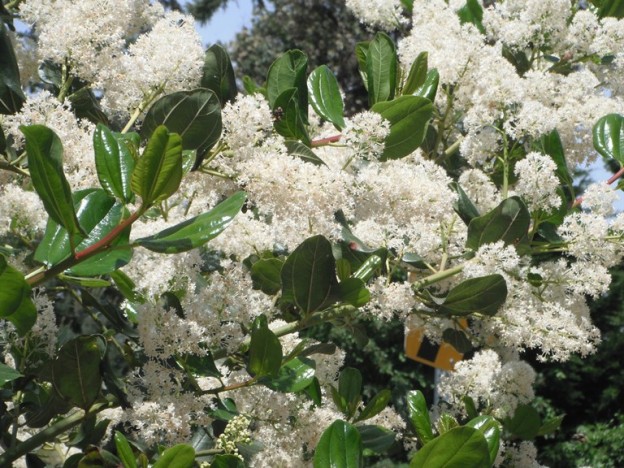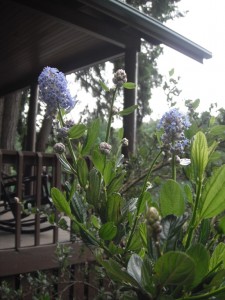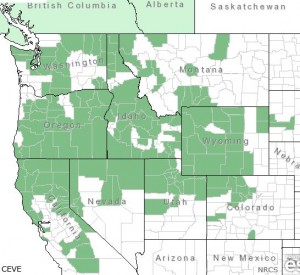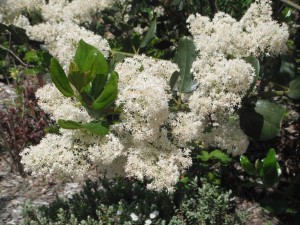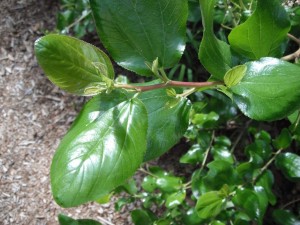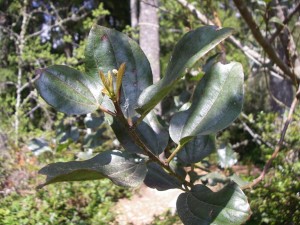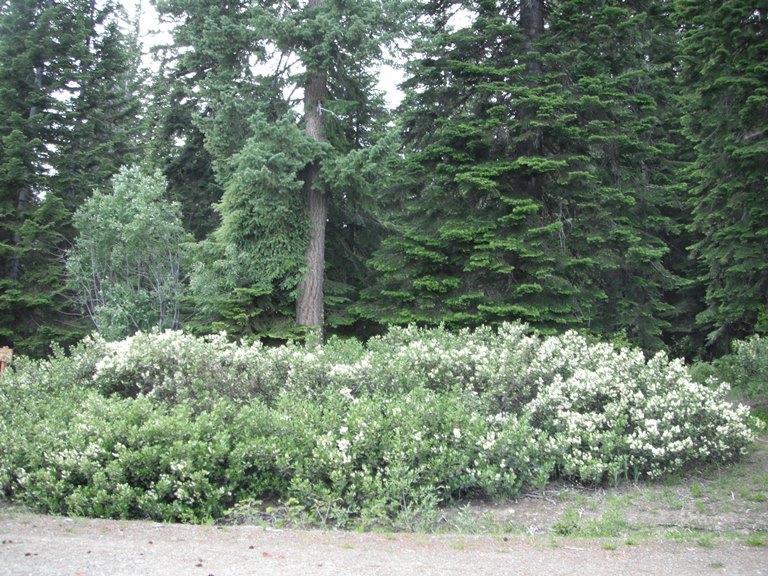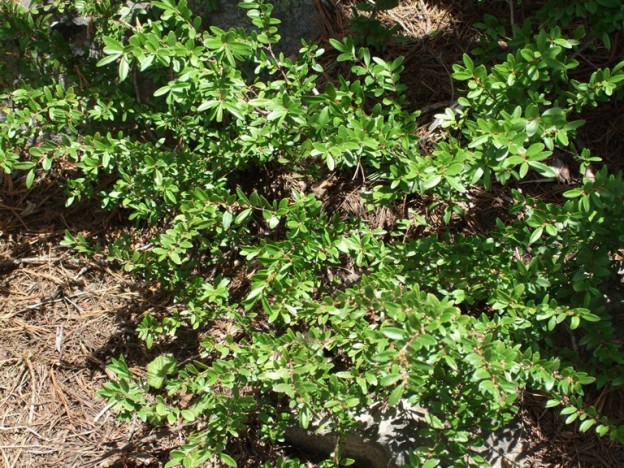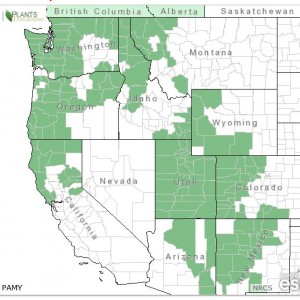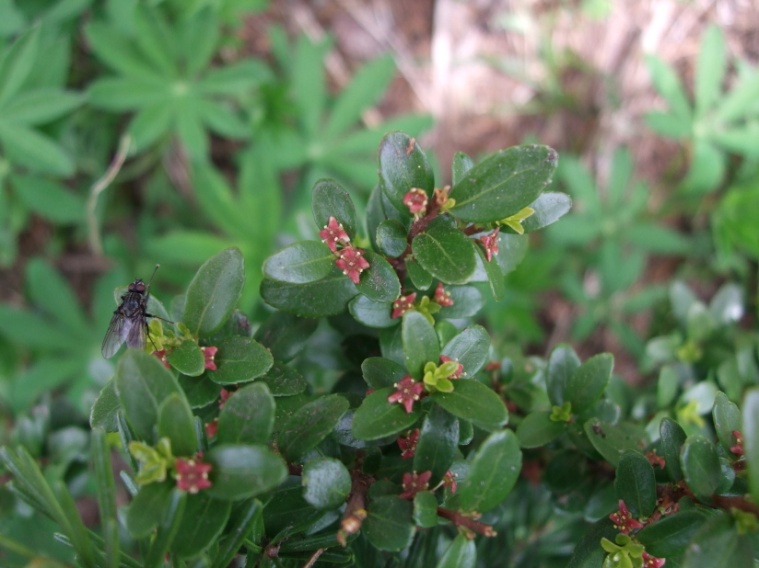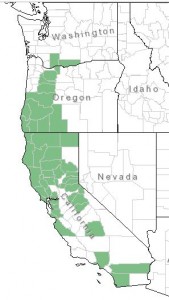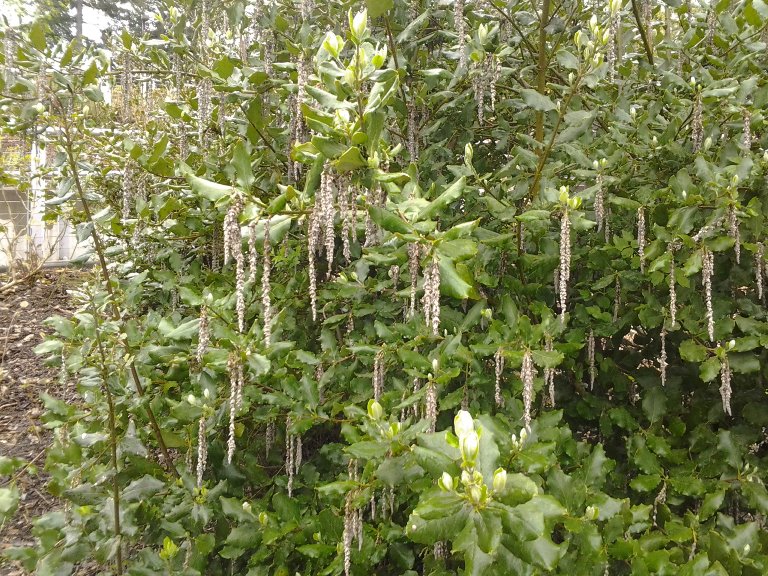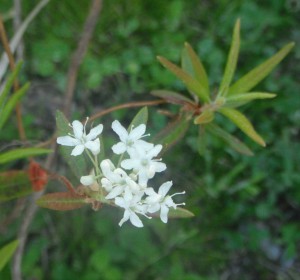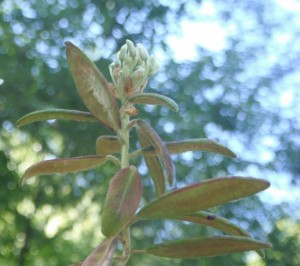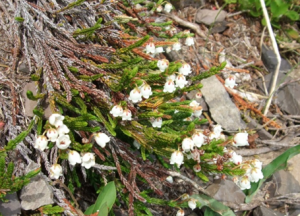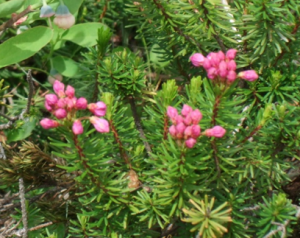Snowbrush The Buckthorn Family–Rhamnaceae
C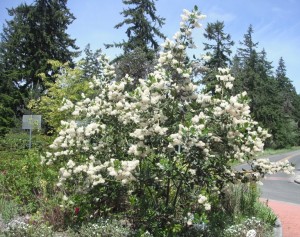 eanothus velutinus Douglas ex Hook.
eanothus velutinus Douglas ex Hook.
(See-uh-NO-thus vel-OO-tin-us)
Names: Ceanothus is a Greek name for a spiny shrub. Velutinus means soft and velvety, referring to short, dense, silky hairs on the undersides of the leaves. This feature is more pronounced on shrubs found in drier areas east of the Cascades. When in bloom, it is covered with clusters of tiny white flowers, hence the name “Snowbrush.” It is also commonly known as Tobacco Brush or Red Root; other common names: Cinnamon Brush, Sticky Laurel, Shiny-leaf Ceanothus, and Mountain Balm allude to its sticky, scented leaves. Although it is also sometimes called Deerbrush, that name is more often applied to the related species, C. integerrimus (discussed in the section on deciduous shrubs).
Relationships: The genus Ceanothus consists of about 60 shrubs or small trees found only in North America with about 40 occurring only in California. Many have blue or purple flowers, earning the genus the common name, “Wild Lilacs,” but our creamy white-flowered northwestern species are generally called “Buckbrushes.” (Redstem Ceanothus , C. sanguineus, and Deerbrush, C. integerrimus, will be discussed in the deciduous shrub section.) Blueblossom, C. thyrsiflorus,, one of the tallest and hardiest Ceanothus sp., which is native to southwestern Oregon and the California coast, is often planted in northwest landscapes.
Distribution: Snowbrush is found from British Columbia and Alberta south to California and east to South Dakota and Colorado.
Growth: Snowbrush grows to about 9 feet (3m) tall. It sometimes sprawls as it competes for sunlight, growing best in full sun.
Diagnostic Characters: Snowbrush is easy to identify by its shiny, often sticky, evergreen leaves with 3 main veins. Its small, creamy white flowers are borne in pyramidal clusters.
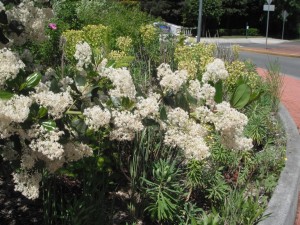 In the Landscape: Snowbrush is an attractive evergreen shrub in the landscape for dry areas. It also is able to fix nitrogen, so is useful on restoration sites.
In the Landscape: Snowbrush is an attractive evergreen shrub in the landscape for dry areas. It also is able to fix nitrogen, so is useful on restoration sites.
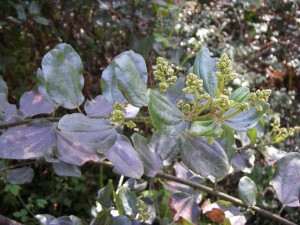 Phenology: Bloom Period: May -June. Seedpods ripen in late June to early August; dispersal begins in August when seeds are ejected from the pods and fall to the ground.
Phenology: Bloom Period: May -June. Seedpods ripen in late June to early August; dispersal begins in August when seeds are ejected from the pods and fall to the ground.
Propagation: Snowbrush seeds are able to remain viable in the soil for several centuries. They sprout in response to the heat of a fire. Temperatures of 176-203ºF (80-95ºC) are necessary to break the seed coat. Other scarification methods such as abrasion may also be used to break the seed coat and allow water imbibition. After scarification a cold stratification period is also required. They are difficult to keep alive in pots at the nursery, so are often difficult to find.
Use by people: Deer brush was used by natives in various preparations as a cleansing solution in the sweathouse, a hair wash for dandruff, and for skin ailments such as diaper rash. It was also used for other ailments such as arthritis.
Use by wildlife: Snowbrush is eaten by deer, elk and mountain goats. Small mammals and birds eat the seeds. Butterflies are attracted to the flowers.
Links:
Consortium of Pacific Northwest Herbaria
WTU Herbarium Image Collection, Plants of Washington, Burke Museum
E-Flora BC, Electronic Atlas of the Flora of British Columbia
Jepson Eflora, University of California
Ladybird Johnson Wildflower Center
USDA Forest Service-Fire Effects Information System
Native Plants Network, Propagation Protocol Database
Native American Ethnobotany, University of Michigan, Dearborn
Common Buckbrush or Wedgeleaf Ceanothus, C. cuneatus is found from the Willamette Valley and the Oregon Cascades southward, throughout much of California to Baja California in Mexico. Douglas writes that it is “abundant near the sources of the Multnomak river.” It usually grows 3-6 feet (1-2m), sometimes taller and has attractive white flower clusters, sometimes tinged with blue or lavender. Harvester ants have been known to cache its seeds, which require fire in order to germinate.

